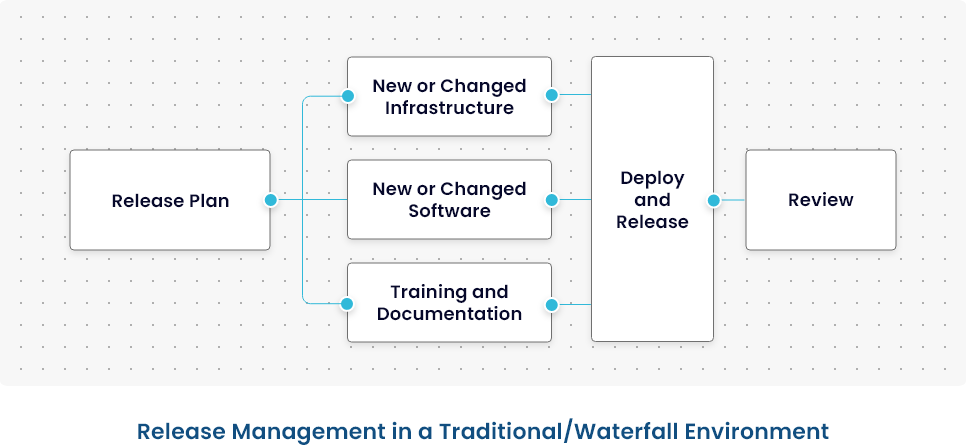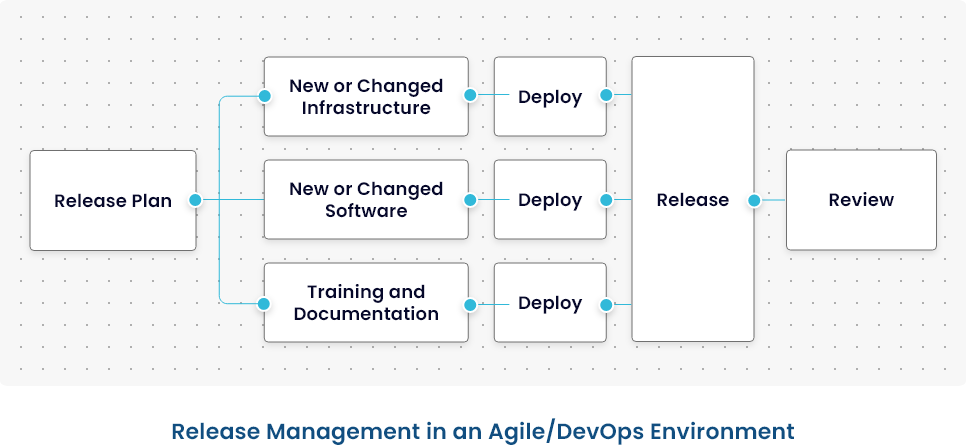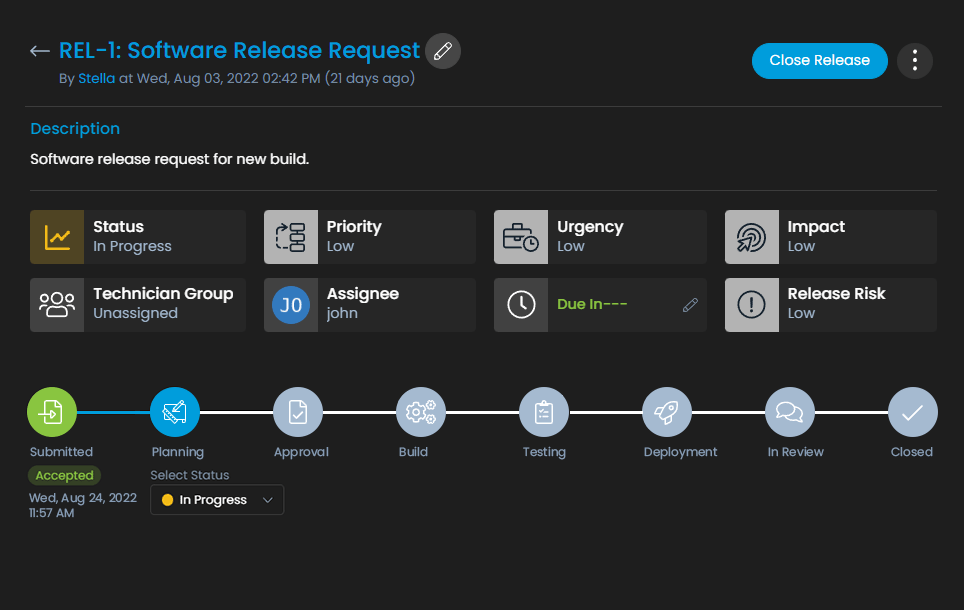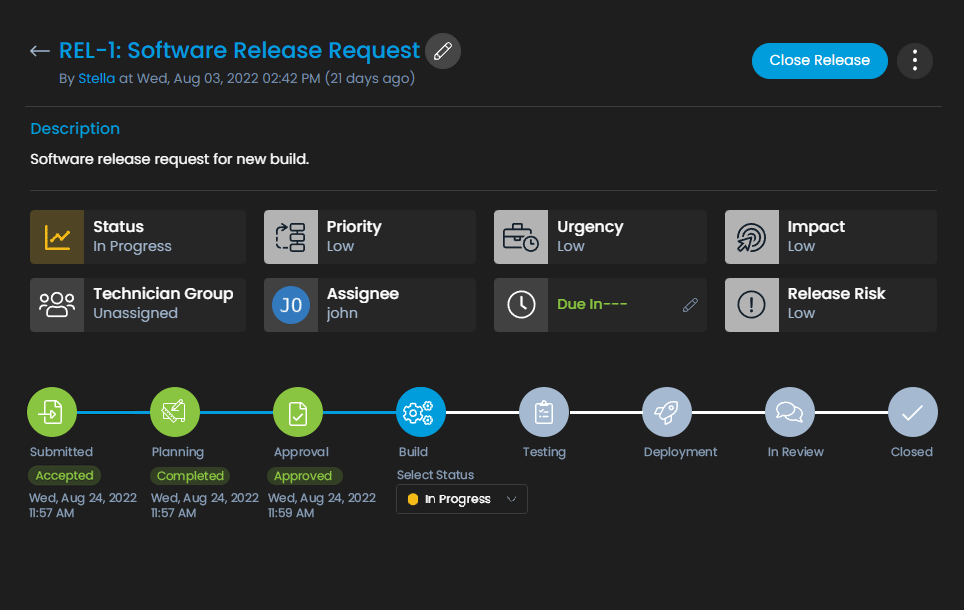In today’s dynamic and competitive world of business, an unplanned product released rarely sees the light of the day. Because of today’s business processes, not all these developments are happening simultaneously.
Therefore, IT organizations require various methods for managing numerous changes. Release control and automation of deployment are useful in this situation.
By stepping into the digital transformation one release at a time, they facilitate the movement to continuous delivery. This reason may represent the new IT norm.
The process of scheduling, designing, testing, deploying, and managing software release management process is known as release management. It guarantees that all the business needs are fulfilled and delivered by release teams while protecting the reliability of the current production environment.
What is Release Management?
The Information Technology Infrastructure Library (ITIL) includes several key processes: release and deployment management. It enables businesses to provide their products and services in a way that prioritizes quality and the needs of their clients and keeps costs down.
Why is Release Management Important?
For a release to be successful, it must achieve the following objectives:
- It is implemented on time.
- It is implemented within budget.
- It will not impact current users.
- It reassures the requirements of existing and new users, advances in technologies, and/or cost-effective demands.
End-to-end Release Lifecycle Management Process
Motadata ServiceOps offers the most inclusive end-to-end solution for development, tracing, and releasing applications into production. With this feature in line, organizations can enhance release visibility, enhance release flow, decrease production downtime, and streamline compliance.
Customers using ServiceOps comprehensive release management solutions help businesses drive dramatic results – much quicker deployment times, greater visibility, lesser application errors, and comprehensive auditability.
The precise release management procedures will change based on the distinctive dynamics of each organization or application. However, the following order is the most used among the businesses.
- Request
- Plan
- Design and Build
- Testing
- Deployment
- Post-Deployment
Release management is a component of the application management process in almost every firm. However, for a business without any official release management policies and procedures, it is ideal to start with a solution of release management components that can serve as the building blocks of an organization-wide release lifecycle management.
Finding these already-existing release management components that can serve as the cornerstones of an organization-wide release management framework is an excellent place to start for a company without official release management policies and procedures.
How does Release Management work with ServiceOps?
Motadata recognizes Release Management’s challenges and has been offering appropriate solutions for over a decade. We enable you to accomplish quick successes by automating manual deployment tasks.
We have developed release management solutions based on our extensive customer success experiences that let you improve your organization into a collaborative, process-driven, highly visible human workflow at a speed that is best suited for you.
For example, a company has implemented a chat application for its employees. So, for that application, they might need to push a new software release or need to build a software update. To implement the patch or new release a developer needs to submit a new release request for all the installed endpoints/use machines.
Submission, Planning, and Approval: The first step of the release request is that the developer/technician needs to raise a request to his/her manager and IT dept to approve the push of this new build of the new software. Once the request is placed it moves to the planning and approval stage.
Build: Once the approval status of the request gets changed, the technician will start working on the new build.
Testing: When the build is prepared, the QA team will start testing the build in their test environment.
Deployment: As soon as the test is completed, the technician will upload the updated build to ServiceOps.
This is how the release lifecycle works within ServiceOps and helps businesses to have a smooth transition of the entire release process.
Benefits of Release Management in an organization
- Reduce the number of incidents affected by Releases.
- Maintain a single source for documenting all Releases through the lifecycle.
- Enhance productivity by creating standard release processes and tooling.
- Make sure that auditable Release controls are established and documented.







